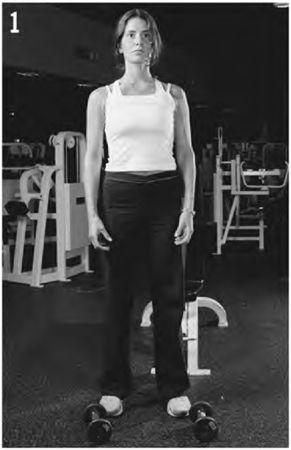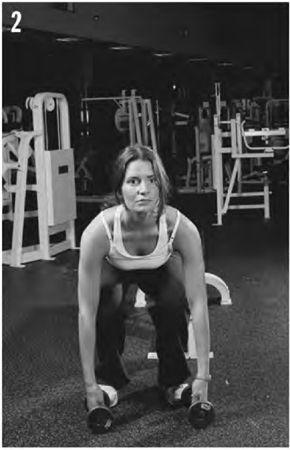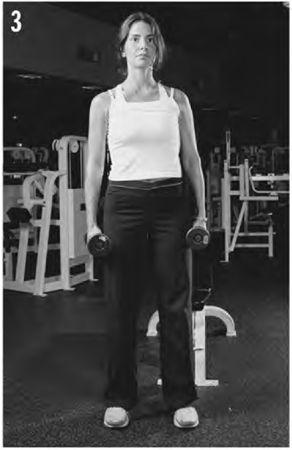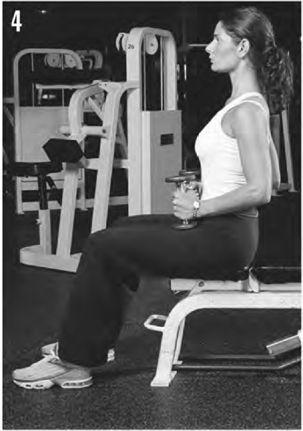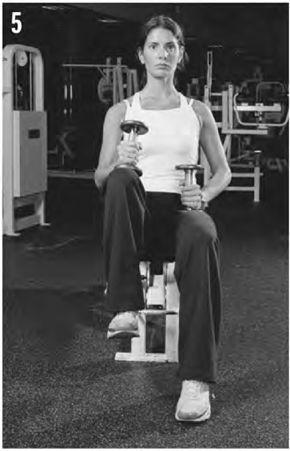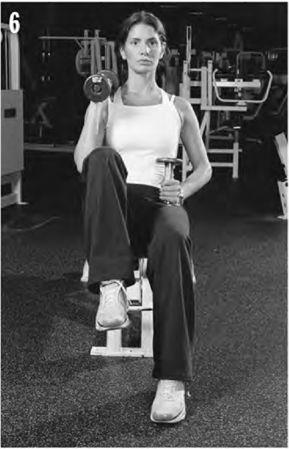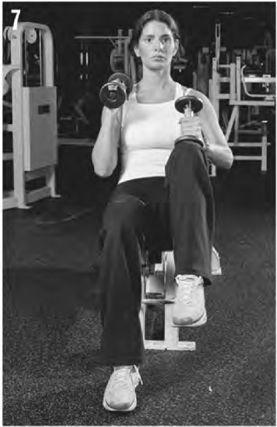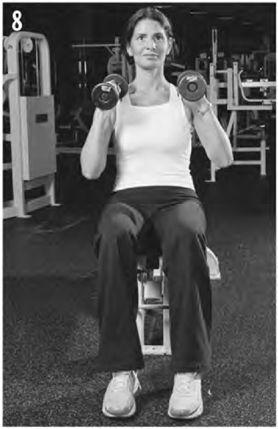The Body Sculpting Bible for Women (61 page)
Read The Body Sculpting Bible for Women Online
Authors: James Villepigue,Hugo Rivera
Tags: #Health & Fitness, #Exercise, #General, #Women's Health

There are many misconceptions when it comes to women and chest training. While chest training will not increase your cup size, you can tone and firm the surrounding muscles of the breast bone, which will prevent your breasts from drooping. Having a healthy, muscular chest can also give a more balanced, symmetrical look to your physical appearance.
For immediate Body Sculpting Bible support & coaching directly from James & Hugo, please visit
www.BodySculptingBible.com
There are four areas of the chest that women should emphasize:
a) Upper Chest Area with exercises such as the Incline Dumbbell Press.
b) Overall Pec Area that attaches to the breasts, giving them support, with exercises such as the dumbbell press, Chest Dips and Push-ups.
c) Outer Chest Upper Area with exercises such as the Incline Dumbbell Flys.
d) Inner Upper Chest Area with exercises such as the Incline Cable Crossovers.
We will mostly recommend dumbbells for the performance of chest exercises for several reasons:
1. They allow for a greater range of motion and a deeper stretch at the bottom of the movements.
2. They allow for better isolation and muscle contraction at the top of the movements, helping to recruit more muscle fibers within the chest and surrounding musculature.
3. They are harder to control and hold than a barbell, helping to strengthen and develop the extremely important antagonistic and synergistic muscles of the chest and shoulders. Overall, the benefits you’ll receive from using dumbbells outweigh the barbell by a long shot.
PROPER ALIGNMENT
The postural alignment is basically the same for all of the following chest exercises. However, you will notice differences in some of the following positions, techniques and forms. The most important thing to remember is to always consciously focus and contract the muscles of the chest while maintaining the postural alignment and form during all of the exercises. This will help to stimulate the chest muscles during exercise.
The following sequence of movements will ensure that you learn how to properly lift a dumbbell off the ground and into position to start many of the exercises we describe. It will also demonstrate how to bring the dumbbells back to the start position of an exercise when you have completed it from a lying position. This is an invaluable technique to learn and can prevent many injuries.
1. When you pick up dumbbells, make sure to bend at the knees while you lift the weight with your legs.
2. Lift with your legs, not with your back! You can easily injure your lower back by bending over to pick up the weight.
3. While standing, place the bottom plate of the dumbbells against your thighs and keep them there as you sit on the bench seat. You will find that by keeping the dumbbells against your thighs as you sit, you will be able to easily manipulate them to the top of your thighs.
4. Begin positioning your body into the correct postural alignment, starting from the bottom of your body and moving to the top.
5. Space your feet about shoulder width apart.
6. Make sure your knees are pointing straight ahead throughout the movement.
7. As you raise the dumbbells to the starting position on top of your thighs, do not try to muscle them up with your arm muscles. This will only drain your strength and can easily cause an injury. You need 100 percent of your strength for the exercise itself and cannot afford to
waste it on something that you can easily avoid. To properly raise the dumbbells from your thighs into exercise position, follow these guidelines; you will be using your leg muscles and momentum to help place you and the dumbbells into position. While sitting in an upright position, with the dumbbells on your thighs, thrust one leg up, leveraging one dumbbell up to around your chest level.
8. Immediately thrust the second dumbbell upward, while simultaneously allowing momentum and the dumbbells to guide you back into the lying position while your abdominal muscles help safely ease you into that position. The reason for lying back immediately when the second dumbbell is thrust upward is so you do not injure your shoulder joints or lower back from having to hold the dumbbells in that otherwise awkward position. Lying back immediately following the dumbbell’s momentum while allowing the abdominal muscles to ease you into position will help ensure your safety and keep your strength at its peak for the exercise. This may sound difficult, but it’s not. It is the safest and easiest way of getting the dumbbells into position (especially if you’re using heavy dumbbells).
9. Once you’ve gotten the dumbbells up, lay back, until your back touches the bench.
10. The dumbbells should now be in position at the sides of your chest.
11. Again make sure your feet are shoulder width apart, and that they are flat on the ground at all times.
12. Make sure your knees are straight.
13. Your lower back should be flat against the bench at all times, with no excessive arch in the lower lumbar region (small of the back).
14. Make sure your back is flat against the bench, with the arms and elbows out to the sides and the forearms perpendicular to the floor. When you’re correctly positioned, retract or squeeze the shoulder blades together. At first it may seem uncomfortable or odd, but do not underestimate the significance of this technique. You must learn to hold this position throughout the movement, and consistent practice will ensure this. By squeezing the shoulder blades together and keeping your entire back in constant contact with the bench, you will actually be taking the anterior shoulder out of the exercise. The chest muscles will now be the primary muscles lifting the weight.
15. Relax your head throughout the move ment, and make sure you do not twist it or lift it from the bench while engaged in the exercise. Alignment is generally the same for all of the exercises.
FAQ:
In the exercise description, you mention depressing the shoulders downward. How do I do this and why?
ANSWER:
Depressing the shoulders downward helps to take some of the initial stimulus away from the trapezoid. rhomboid, and teres muscles of the upper back. These muscles are naturally stimulated during a pull-up. When you lower your shoulders, you will help block the assistive muscles and force the lats to become the primary working muscles.
